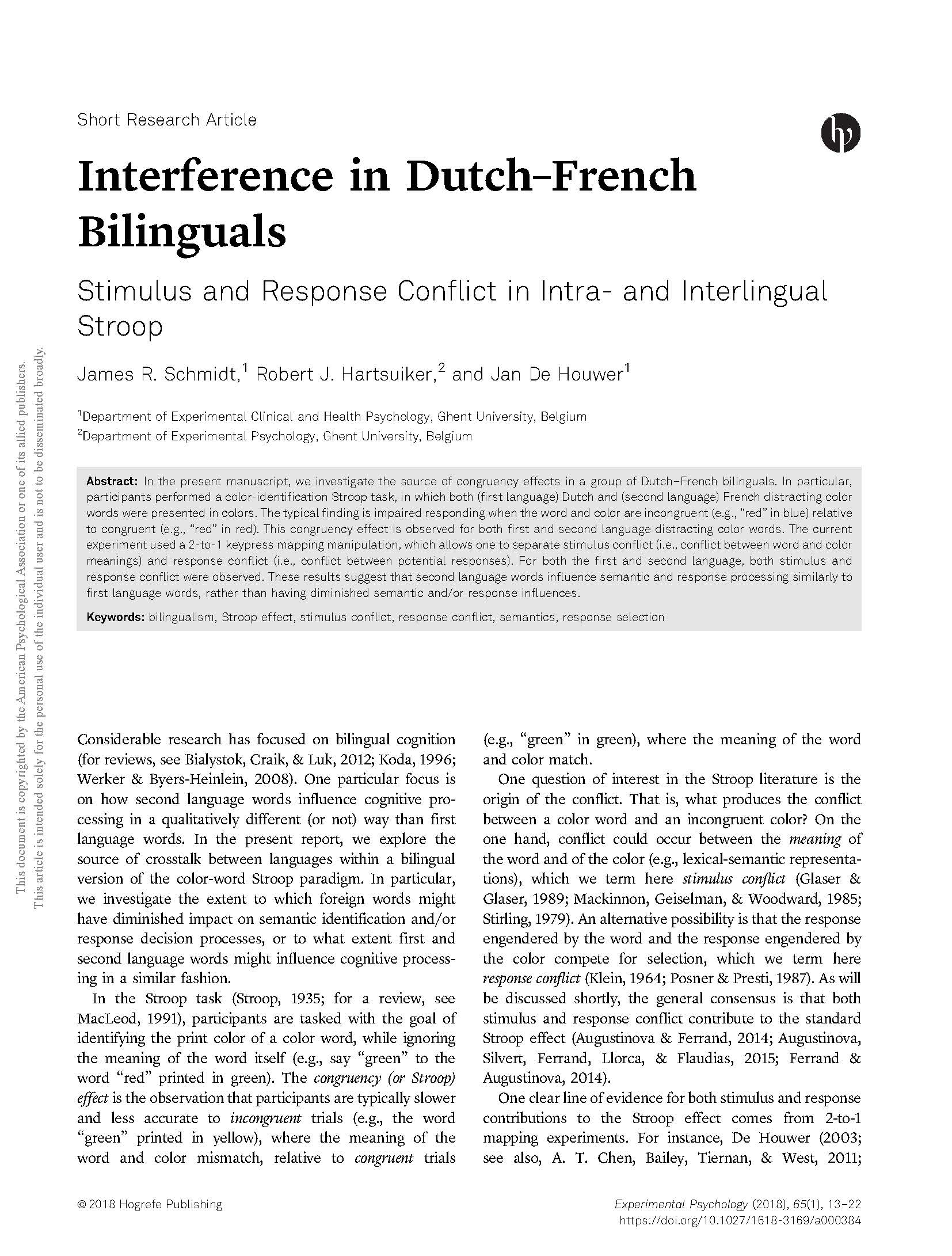In the present manuscript, we investigate the source of congruency effects in a group of Dutch–French bilinguals. In particular, participants performed a color-identification Stroop task, in which both (first language) Dutch and (second language) French distracting color words were presented in colors. The typical finding is impaired responding when the word and color are incongruent (e.g., “red” in blue) relative to congruent (e.g., “red” in red). This congruency effect is observed for both first and second language distracting color words. The current experiment used a 2-to-1 keypress mapping manipulation, which allows one to separate stimulus conflict (i.e., conflict between word and color meanings) and response conflict (i.e., conflict between potential responses). For both the first and second language, both stimulus and response conflict were observed. These results suggest that second language words influence semantic and response processing similarly to first language words, rather than having diminished semantic and/or response influences.
Interference in Dutch-French bilinguals: Stimulus and response conflict in intra- and interlingual Stroop
